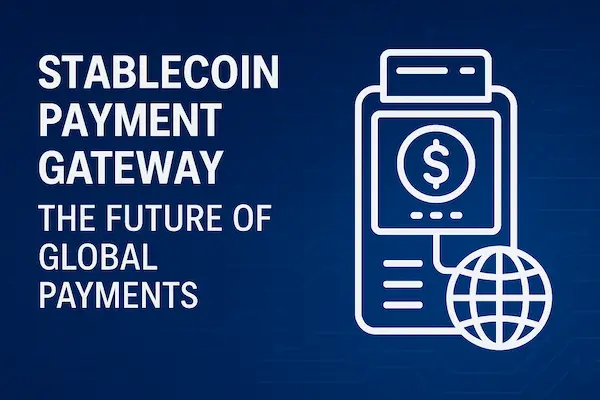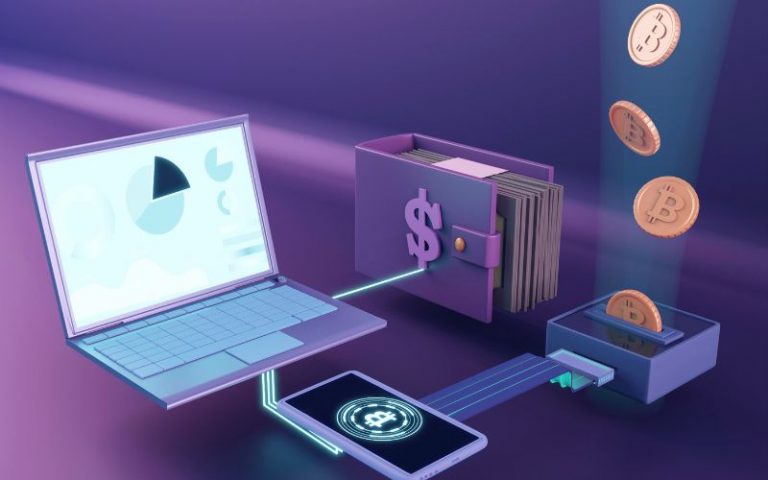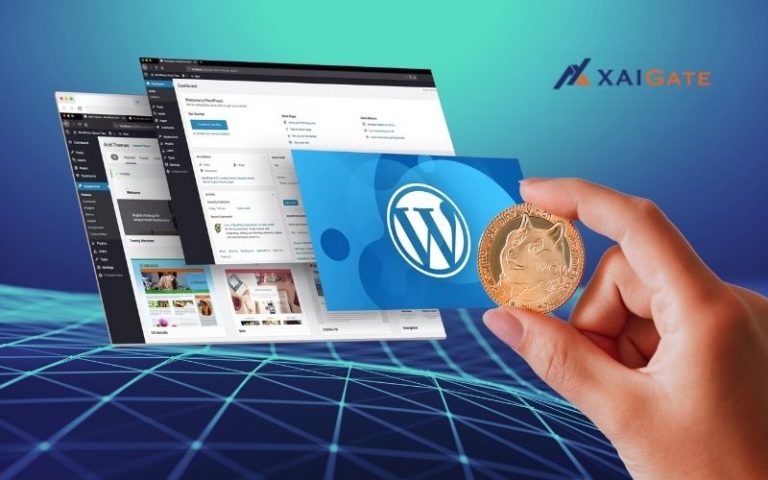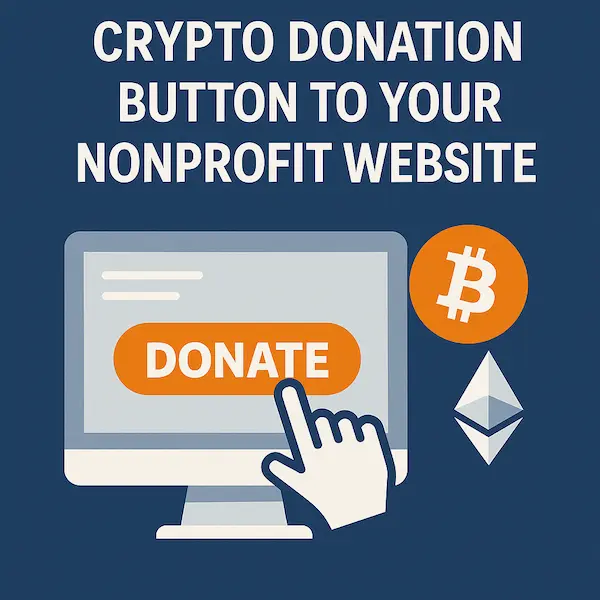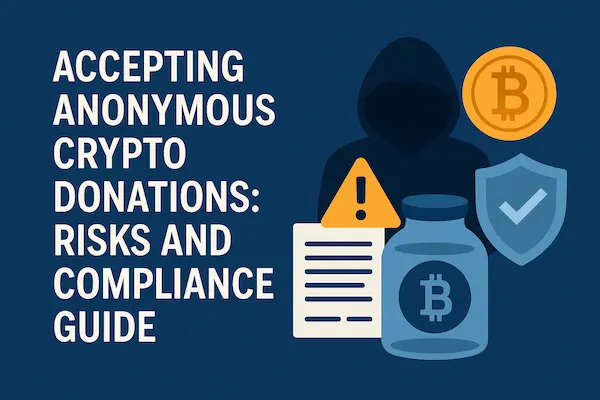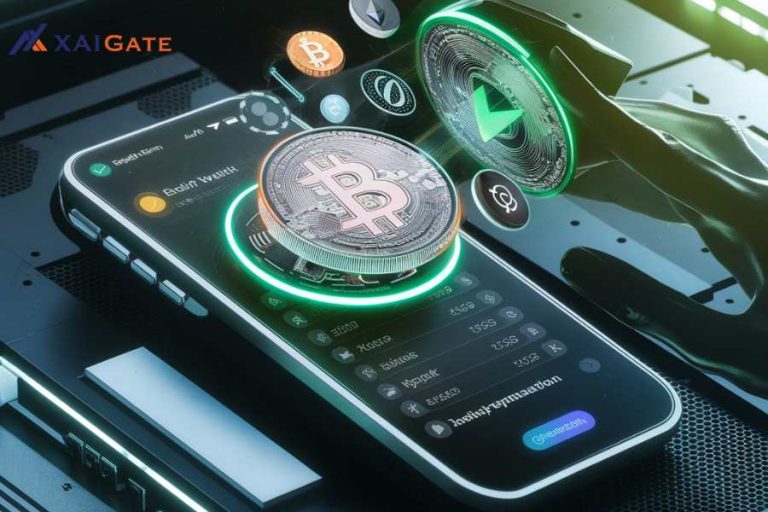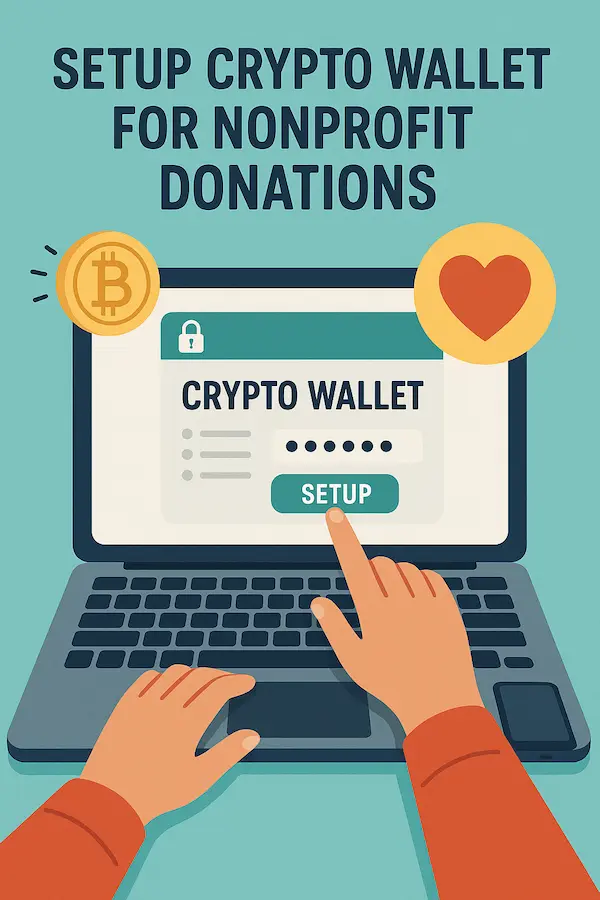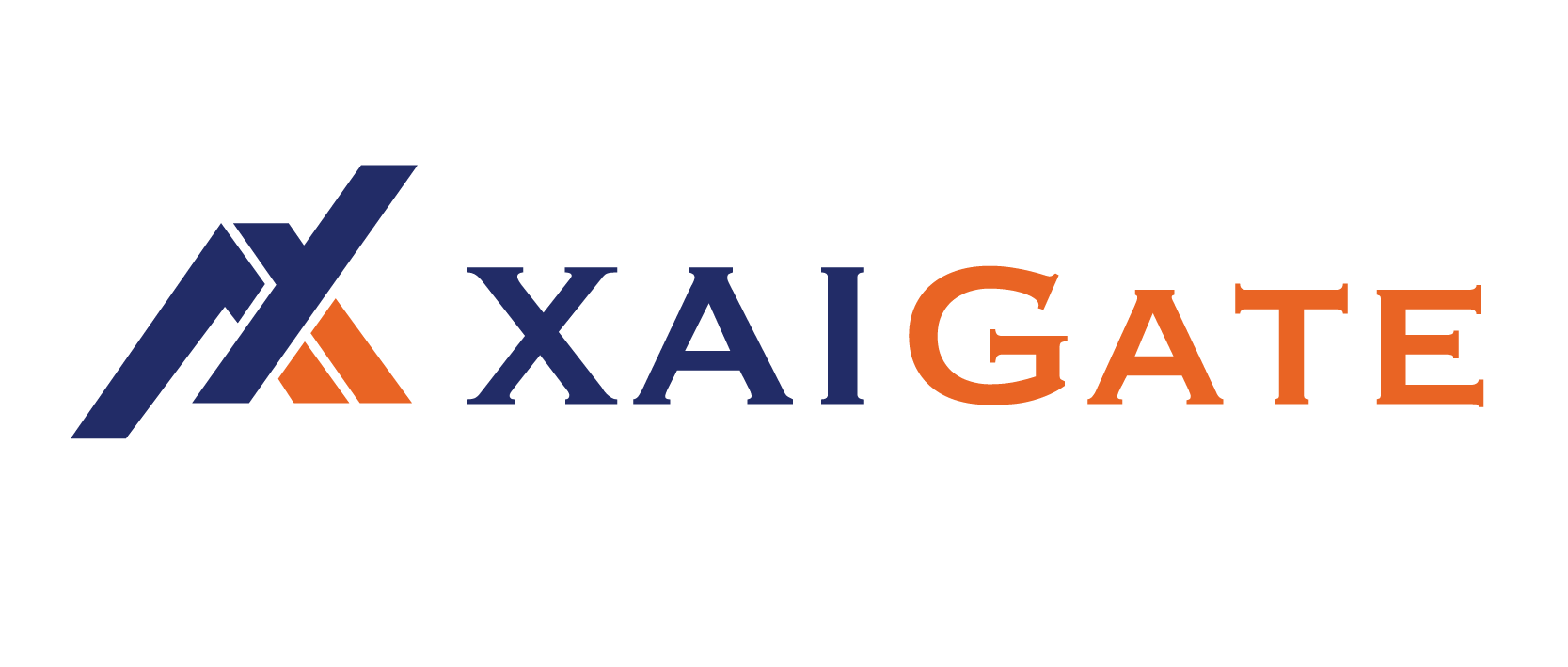Contents
- 1 1. Why Stablecoin Payment Gateways Are Changing Online Payments
- 2 2. What Are Stablecoins and Why Do They Matter for Payments?
- 3 3. How a Stablecoin Payment Gateway Works in Practice
- 4 4. Key Benefits of Using a Stablecoin Payment Gateway
- 5 5. Challenges and Risks of Stablecoin Payment Gateways
- 6 6. Real-World Applications of Stablecoin Payment Gateways
- 7 7. Top Stablecoin Payment Gateways to Watch in 2026
- 8 8. Comparing Stablecoin Gateways with Other Payment Methods
- 9 9. Step-by-Step Guide to Implementing a Stablecoin Payment Gateway
- 10 10. Market Trends and Regulatory Outlook for Stablecoin Gateways (2026 Update)
- 11 11. The Future of Stablecoin Payment Gateways in the Next 5 Years
- 12 12. FAQs on Stablecoin Payment Gateways
- 13 Conclusion – Should Your Business Adopt a Stablecoin Payment Gateway Now?
1. Why Stablecoin Payment Gateways Are Changing Online Payments
In today’s digital economy, the way we move money is evolving just as quickly as the technology that powers it. Not long ago, online transactions were almost entirely dependent on credit cards, banks, and a handful of global processors like PayPal. While these systems still dominate, they are often slow, expensive, and not always built for a truly borderless world.
Enter the stablecoin payment gateway. By combining the stability of government-backed currencies with the efficiency of blockchain, this new model of payment offers businesses and consumers something they’ve long been asking for: fast, low-cost, and reliable global transactions.
Unlike Bitcoin or Ethereum, which can fluctuate wildly in price, stablecoins are designed to hold steady against assets like the U.S. dollar. That stability is what makes them practical for everyday payments. For merchants, it means fewer worries about exchange rate swings. For customers, it creates a checkout experience that feels as familiar as paying with a debit card—but powered by digital dollars.
The question is no longer if stablecoin payment gateways will shape the future of commerce, but how quickly businesses will adapt to them. As we look ahead to 2026 and beyond, stablecoins are positioned not just as an alternative, but as a potential backbone of global payments.
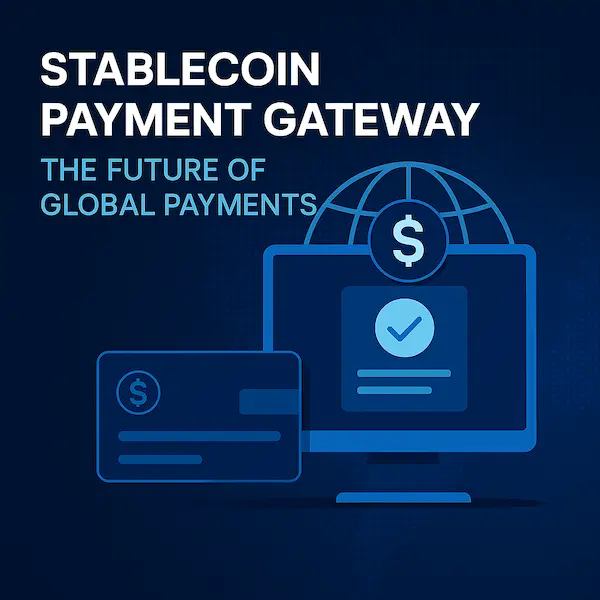
2. What Are Stablecoins and Why Do They Matter for Payments?
When people hear the word “cryptocurrency,” they often think of volatile assets like Bitcoin or Ethereum. Prices can jump or fall by 10–20% within a single day. That may excite traders, but it makes crypto almost useless for everyday payments. Nobody wants to buy a coffee in Bitcoin in the morning, only to realize that payment is worth less by lunchtime.
This is where stablecoins come in. Built to maintain a steady value, they bridge the gap between traditional money and blockchain innovation. Let’s break it down:
Defining Stablecoins: USDT, USDC, DAI and Beyond
Stablecoins are digital tokens pegged to real-world assets, usually the U.S. dollar but sometimes the euro, gold, or even a basket of currencies.
-
Tether (USDT) is the most widely used stablecoin.
-
USD Coin (USDC) is issued by Circle and often praised for transparency.
-
DAI is decentralized, backed by crypto collateral rather than fiat reserves.
Each serves the same purpose: combining the benefits of crypto (speed, borderless transfer) with the price reliability of fiat.
Why Stablecoins Stay Stable Compared to Other Cryptos
Unlike Bitcoin, which is driven purely by supply and demand, stablecoins rely on mechanisms like:
-
Fiat reserves: Every token is backed 1:1 by U.S. dollars in a bank account (e.g., USDC).
-
Crypto collateral: Smart contracts automatically maintain stability (e.g., DAI).
-
Algorithmic models: Some projects use algorithms to balance supply and demand.
This built-in stability makes them trustworthy enough to be used in a stablecoin payment gateway, where businesses can accept “digital dollars” without worrying about sudden price drops.
Real-World Use Cases of Stablecoins in Global Commerce
Stablecoins are not just theory—they’re already solving problems:
-
Cross-border remittances: Migrant workers sending money home avoid high bank fees.
-
E-commerce: Merchants can receive global payments instantly.
-
Inflation protection: In countries with unstable currencies, stablecoins provide a safer store of value.
These examples explain why stablecoins are central to the idea of a stablecoin payment gateway. Without their reliability, crypto payments would remain too risky for mainstream adoption.
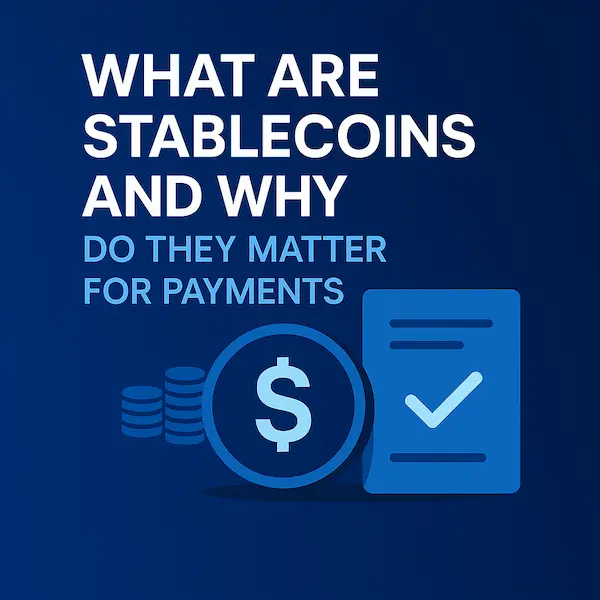
3. How a Stablecoin Payment Gateway Works in Practice
For many businesses, the idea of accepting crypto payments sounds complicated. But in reality, a stablecoin payment gateway works much like any traditional payment processor—just faster, cheaper, and powered by blockchain technology.
Here’s how the process typically unfolds:
Transaction Flow – From Checkout to Settlement
When a customer chooses to pay with stablecoins (such as USDT or USDC), the gateway processes the payment in real time:
-
Checkout – The customer selects “Pay with stablecoin” at the online store.
-
Payment request – A QR code or wallet address is generated by the gateway.
-
Confirmation – The customer approves the transfer in their wallet.
-
Settlement – The merchant receives the stablecoins within minutes, often instantly.
Unlike credit card payments, there are no intermediaries holding the funds for days. Settlement is direct and nearly immediate.
Integration with E-Commerce Platforms and APIs
Modern stablecoin gateways are built for ease of use:
-
Plugins for Shopify, WooCommerce, and Magento make setup simple.
-
APIs allow SaaS companies and marketplaces to embed stablecoin payments into apps.
-
Multi-currency support enables merchants to accept different stablecoins (USDT, USDC, DAI) while receiving payouts in fiat if preferred.
This flexibility means even small businesses can start accepting stablecoin payments with minimal technical effort.
Security Layers and Compliance (KYC, AML, Licensing)
Security and regulation are critical in payments—and stablecoin gateways are no exception. Leading providers implement:
-
Encryption and fraud detection to prevent malicious activity.
-
KYC/AML compliance to meet international financial regulations.
-
Licensing in jurisdictions where crypto payments are regulated.
By combining blockchain transparency with regulatory safeguards, stablecoin gateways create trust for both merchants and customers.
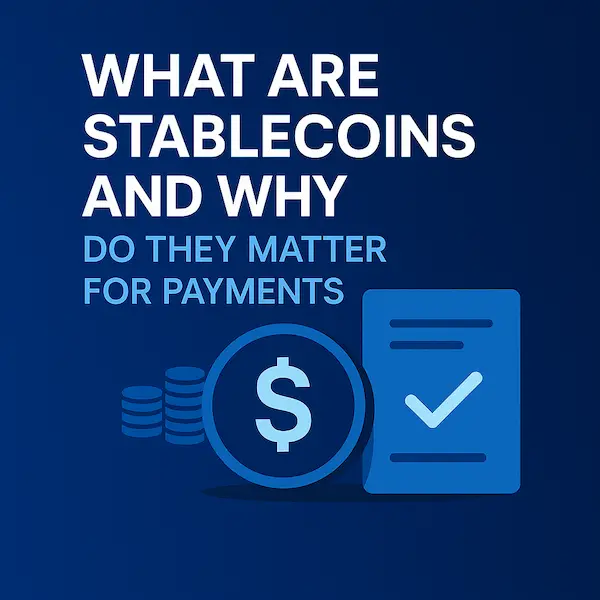
4. Key Benefits of Using a Stablecoin Payment Gateway
Adopting a stablecoin payment gateway isn’t just about keeping up with crypto trends. For many businesses, it directly impacts their bottom line by reducing costs, improving efficiency, and reaching new markets. Here are some of the most important advantages.
Lower Fees Compared to Banks and Credit Cards
Traditional payment processors often charge 2–4% per transaction, and cross-border transfers can add even more in hidden fees. Stablecoin gateways cut this dramatically, sometimes to less than 1%. For high-volume businesses or international sellers, those savings quickly add up.
Instant Settlement Without Forex Hassles
International transactions through banks can take three to five business days. With stablecoins, settlement is near-instant. Merchants don’t have to wait for funds to clear or worry about fluctuating exchange rates. A stablecoin payment gateway ensures the value received is the same as the value sent.
Expanding Customer Reach with Borderless Payments
Stablecoins make global commerce more accessible. A business in Vietnam can sell to a customer in Brazil without either party worrying about currency conversion or banking restrictions. This borderless feature allows even small companies to act like global players.
Table 1: Traditional Bank vs Stablecoin Payment Gateway
| Feature | Traditional Bank Transfer | Stablecoin Payment Gateway |
|---|---|---|
| Transaction Fees | 2–4% + hidden charges | <1% typical |
| Settlement Speed | 3–5 business days | Near-instant |
| Currency Risk | High (forex exposure) | Minimal |
| Accessibility | Limited (bank hours, local restrictions) | 24/7, borderless |
The numbers make it clear: stablecoin gateways are not just cheaper and faster, they also remove many of the obstacles that slow down global commerce today.

5. Challenges and Risks of Stablecoin Payment Gateways
While the advantages of stablecoin payment gateways are clear, businesses must also consider the risks. Payments may be faster and cheaper, but the ecosystem still faces hurdles in regulation, security, and user trust.
Regulatory and Legal Uncertainty Across Regions
Stablecoin regulations are far from uniform. Some countries, like Singapore and Switzerland, have clear frameworks that encourage innovation. Others, including the U.S., continue to debate how stablecoins should be classified—securities, commodities, or something else entirely. For businesses, this lack of clarity can create compliance challenges, especially if they operate across borders.
Wallet Security and Private Key Management Risks
Accepting stablecoins requires digital wallets. While gateways add layers of protection, merchants are still exposed to risks if private keys are mismanaged or stolen. Unlike banks, which can reverse fraudulent charges, blockchain transactions are irreversible. A single mistake could mean permanent loss of funds.
Trust Issues Between Different Stablecoins (USDT vs USDC vs DAI)
Not all stablecoins are created equal. Some, like USDT (Tether), have faced questions about whether they truly hold enough reserves. Others, like DAI, rely on decentralized collateral systems that can be stressed during market volatility. Businesses must carefully choose which stablecoins to accept through their payment gateway to avoid unnecessary exposure.
Despite these risks, the overall trend is still moving toward adoption. As regulations mature and security solutions improve, stablecoin payment gateways will likely become more reliable and widely trusted.
6. Real-World Applications of Stablecoin Payment Gateways
Stablecoin payment gateways are no longer just a concept in whitepapers. They’re already being used across industries, solving real problems for businesses and individuals worldwide.
Cross-Border E-Commerce and Global Freelancing
For online stores and freelancers, receiving payments from overseas clients has always been complicated. Traditional transfers involve delays, high fees, and unfavorable currency exchange rates. With stablecoin gateways, an e-commerce shop in Vietnam can accept USDC directly from a buyer in Europe, and a freelancer in the Philippines can receive instant payments from a U.S. client—without waiting days for banks to clear the funds.
SaaS and Tech Companies Adopting Stablecoin Payments
Subscription-based services and digital platforms are increasingly turning to stablecoins as a way to streamline recurring payments. Stablecoin gateways reduce the friction of international billing, giving startups and SaaS providers access to a truly global customer base.
Gaming, Metaverse, and In-Game Digital Economies
In the gaming and metaverse industries, stablecoins act as a reliable in-game currency. Payment gateways allow players to purchase digital items instantly, without worrying about volatile crypto prices or excessive transaction fees. This makes stablecoins a bridge between the virtual economy and the real one.
Case Study: A Freelancer’s Experience
Anna, a graphic designer based in Eastern Europe, once relied on PayPal to receive payments from clients in the U.S. Each transaction cost her 4–6% in fees and often took several days to clear. After switching to a stablecoin payment gateway, she now receives USDC payments within minutes at less than 1% cost. The result: faster cash flow, higher earnings, and greater confidence working with clients worldwide.
7. Top Stablecoin Payment Gateways to Watch in 2026
The competition among stablecoin payment providers is heating up. From global exchanges to specialized startups, businesses now have many options to integrate digital dollar payments. Among them, XaiGate stands out as a frontrunner in 2026.
XaiGate (Top Pick 2026)
XaiGate has quickly gained attention as a next-generation stablecoin payment gateway built for speed, compliance, and global adoption. Unlike many competitors, XaiGate focuses exclusively on stablecoin transactions, ensuring merchants get the stability and reliability they need.
Key strengths of XaiGate:
-
Ultra-low fees: Competitive rates lower than most traditional processors.
-
Fast settlement: Near-instant transactions without currency conversion delays.
-
Compliance-first approach: Built-in KYC/AML tools help businesses stay aligned with international regulations.
-
Global reach: Tailored solutions for e-commerce, freelancers, and enterprises.
By addressing both speed and compliance, XaiGate positions itself not just as another gateway, but as a trusted infrastructure layer for the future of global payments.
Coinbase Commerce
Coinbase Commerce remains a trusted option, especially for U.S. and European businesses. It supports USDC and integrates well with popular e-commerce platforms.
Binance Pay
With access to one of the largest crypto ecosystems, Binance Pay offers wide adoption and flexibility. It supports multiple stablecoins and digital assets.
Circle Pay
Circle’s reputation as the issuer of USDC makes it a strong player, particularly in regulated markets. Circle Pay is expanding partnerships with banks and fintechs.
BitPay
A veteran in crypto payments, BitPay provides merchants with tools to accept stablecoins alongside Bitcoin. Its strong U.S. presence gives it credibility with small and medium-sized businesses.
Emerging Startups
A wave of new startups is focusing on niche use cases, from freelancer invoicing to cross-border settlements, highlighting the pace of innovation in this field.
Table 2: Comparison of Leading Stablecoin Payment Gateways
| Provider | Supported Stablecoins | Settlement Options | Typical Fees | Best For |
|---|---|---|---|---|
| XaiGate | USDT, USDC, DAI, BUSD, UDSe, others | Crypto & Fiat | Only 0.2% | Global merchants, freelancers, enterprises |
| Coinbase Commerce | USDC, DAI, USDT | Crypto or Fiat | ~1% | E-commerce merchants |
| Binance Pay | USDT, USDC, BUSD + others | Crypto only | 0–1% | Businesses seeking global reach |
| Circle Pay | USDC | Fiat & Crypto | Varies by region | Regulated payments, financial institutions |
| BitPay | USDC, USDT, DAI, BTC | Crypto or Fiat | ~1% | SMEs in the U.S. |
| Niche Startups | Varies | Crypto only | Competitive | Freelancers, cross-border SMEs |
Placing XaiGate at the top is not just about ranking—it reflects the company’s commitment to providing a future-proof payment infrastructure built specifically for stablecoins.
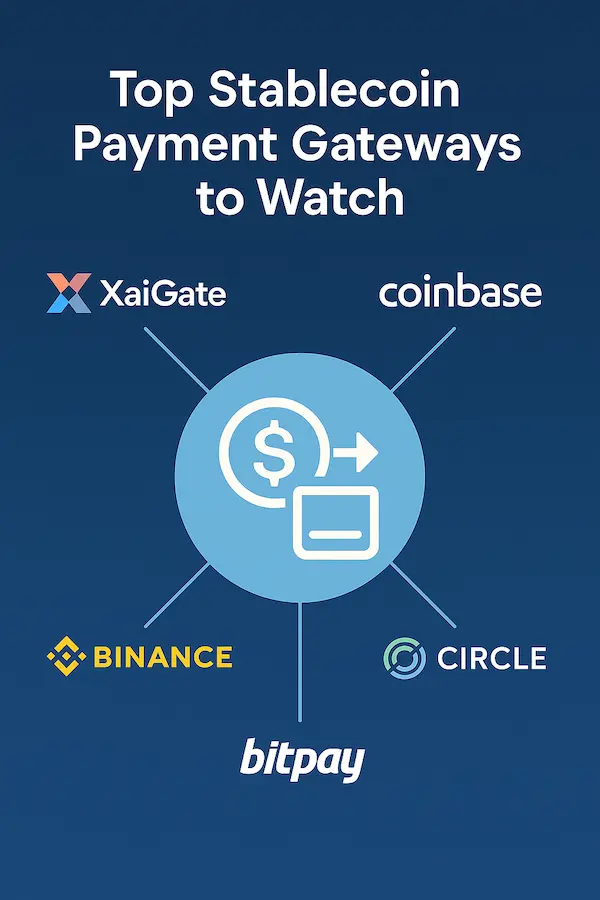
8. Comparing Stablecoin Gateways with Other Payment Methods
The rise of stablecoin payment gateways doesn’t mean traditional payment systems are going away anytime soon. However, it does highlight the weaknesses of older methods and the unique strengths that stablecoins bring to the table.
Stablecoin vs Credit Cards and PayPal
Credit cards and PayPal remain convenient, but they come with hidden costs: high transaction fees, chargebacks, and settlement delays. In contrast, stablecoin gateways offer near-instant settlement and much lower fees. For international transactions, the savings can be significant.
Stablecoin vs Bitcoin Payment Gateways
Bitcoin gateways were the first attempt to bring crypto into commerce. While they paved the way, volatility remains their biggest drawback. A payment received in Bitcoin can lose value within hours. Stablecoin gateways fix this problem by offering digital dollars that retain their value, making them far more practical for both merchants and consumers.
Why Stablecoins Offer the Best Balance of Stability and Speed
Stablecoins combine the best of both worlds: the speed and borderless nature of blockchain with the reliability of fiat money. Businesses get paid instantly, customers avoid excessive fees, and both parties benefit from transparent, verifiable transactions.
Table 3 Comparison Matrix: Credit Card – PayPal – Bitcoin Gateway – Stablecoin Gateway
| Feature | Credit Cards | PayPal | Bitcoin Gateway | Stablecoin Gateway |
|---|---|---|---|---|
| Transaction Fees | 2–4% | 3–5% | 1–2% | <1% |
| Settlement Speed | 2–5 days | 1–3 days | Minutes | Near-instant |
| Volatility | None | None | High | Very Low |
| Chargebacks | Yes | Yes | No | No |
| Global Accessibility | Moderate | High | High | Very High |
The comparison makes one thing clear: while traditional systems are still useful, stablecoin gateways are quickly emerging as the more efficient option for the digital-first economy.
9. Step-by-Step Guide to Implementing a Stablecoin Payment Gateway
For businesses interested in exploring stablecoin payments, the process is more straightforward than it may seem. Here’s a practical roadmap to get started:
Step 1 – Choose the Right Provider
Not all gateways are created equal. Some focus on compliance (like Circle Pay), others on ecosystem reach (like Binance Pay), while specialized platforms such as XaiGate are built specifically for stablecoin stability and low-cost global transactions. The right choice depends on your industry, transaction volume, and regulatory environment.
Step 2 – Integrate via Plugin or API
Most gateways offer ready-made plugins for e-commerce platforms like Shopify, WooCommerce, or Magento. For SaaS companies and custom websites, APIs make it possible to embed stablecoin payments directly into apps and checkout systems.
Step 3 – Set Up Wallets and Security
Merchants need wallets to receive stablecoin payments. Best practices include using multi-signature wallets, cold storage for reserves, and 2FA for everyday transactions. Security should be treated as seriously as in traditional banking.
Step 4 – Ensure Compliance with Local Regulations
Before going live, businesses must align with KYC (Know Your Customer), AML (Anti-Money Laundering), and tax reporting requirements in their jurisdiction. Providers like XaiGate simplify this by embedding compliance checks into the payment process.
Step 5 – Test and Launch
Start small by accepting a few payments, then scale gradually. Collect feedback from customers, monitor settlement times, and fine-tune integration. Over time, stablecoin payments can become a seamless part of your checkout experience.
Quick Visual Guide – Implementing a Stablecoin Payment Gateway
-
Select a provider
-
Install plugin / connect API
-
Configure wallet and security layers
-
Set compliance rules
-
Test and go live
By following these steps, businesses can quickly unlock the benefits of stablecoin payment gateways while minimizing risks.
10. Market Trends and Regulatory Outlook for Stablecoin Gateways (2026 Update)
Stablecoin adoption has accelerated sharply in the past two years, with payment gateways emerging as one of the most promising use cases. According to recent industry reports, more than 60% of crypto transactions in Asia now involve stablecoins, reflecting their growing role in cross-border commerce.
In 2026, several major trends stand out:
USDC Expansion Across Asia
Circle, the issuer of USDC, has announced partnerships with regional payment providers in Singapore, Hong Kong, and Japan. This expansion is making USDC one of the most trusted stablecoins for regulated payments.
Regulatory Frameworks Taking Shape
Governments worldwide are moving from uncertainty to clearer guidelines. The European Union has implemented its MiCA (Markets in Crypto-Assets) regulation, which provides a structured approach to stablecoin issuance and payments. Meanwhile, the U.S. is finalizing federal legislation to establish reserve standards for stablecoin issuers.
Integration with Traditional Finance
Banks and fintechs are beginning to integrate stablecoin gateways into their existing systems. Some U.S. community banks are piloting USDC settlements, and Asian e-wallet providers are offering stablecoin top-ups alongside fiat.
These trends highlight a key takeaway: regulation is no longer a question of if, but how. For businesses, this creates both opportunities and obligations. Choosing a gateway like XaiGate, which prioritizes compliance, helps companies stay ahead of regulatory risks while benefiting from the speed of blockchain payments.
11. The Future of Stablecoin Payment Gateways in the Next 5 Years
Looking ahead, stablecoin payment gateways are set to evolve from niche tools into core infrastructure for global commerce. Their role will expand across multiple layers of the financial system.
Coexistence with Central Bank Digital Currencies (CBDCs)
As central banks develop digital currencies, stablecoins will likely operate alongside them. Payment gateways may eventually support both CBDCs and private stablecoins, offering consumers more choices while ensuring interoperability.
Shaping the Future of Cross-Border Commerce
By removing intermediaries, stablecoin gateways can reduce the cost of sending money internationally by up to 70%. For small businesses and freelancers, this could mean competing on a level playing field with multinational corporations.
Competing with Visa, Mastercard, and PayPal
In the next five years, stablecoin gateways will directly challenge existing giants in the payments industry. With lower fees, faster settlement, and 24/7 accessibility, they offer advantages that traditional processors cannot easily match. The question is no longer whether they will compete—but how quickly adoption will scale.
Stablecoin payment gateways are not just a passing trend. They represent a shift toward a financial infrastructure where money moves as freely and efficiently as information does on the internet. For businesses ready to adapt, the next five years will be full of opportunity.
12. FAQs on Stablecoin Payment Gateways
1. Is a stablecoin payment gateway safe to use?
Yes, when using a reputable provider. Gateways such as XaiGate, Coinbase Commerce, and Circle Pay combine blockchain transparency with strong security measures like encryption, fraud monitoring, and regulatory compliance.
2. Can small businesses benefit from a stablecoin payment gateway?
Absolutely. Stablecoin gateways lower fees, settle instantly, and allow even small online stores or freelancers to serve global clients without worrying about high banking costs.
3. How is a stablecoin payment gateway different from a regular crypto gateway?
Traditional crypto gateways often accept volatile assets like Bitcoin or Ethereum, which can fluctuate in value. Stablecoin payment gateways process only stablecoins, offering digital dollars that maintain steady value, making them more reliable for everyday payments.
4. Which stablecoins are most widely supported by gateways?
The most common stablecoins are USDT (Tether), USDC (USD Coin), and DAI. Some gateways also support regional stablecoins or additional tokens backed by fiat reserves.
5. Can I use a stablecoin payment gateway for cross-border transactions?
Yes. Stablecoins are designed for fast, low-cost international transfers. Businesses and freelancers can receive payments from clients worldwide without delays or costly currency conversions.
6. Do stablecoin gateways comply with government regulations?
Leading providers integrate KYC (Know Your Customer) and AML (Anti-Money Laundering) processes. Platforms like XaiGate and Circle Pay actively work with regulators to ensure compliance across multiple jurisdictions.
7. What industries are adopting stablecoin payment gateways first?
E-commerce, SaaS platforms, freelancers, and the gaming/metaverse sectors are early adopters. These industries value fast, borderless, and low-cost transactions.
8. Can merchants convert stablecoin payments into fiat currency?
Yes. Many gateways allow automatic conversion to fiat (like USD or EUR), giving merchants flexibility to manage funds in their preferred currency.
9. Are there risks in using a stablecoin payment gateway?
The main risks include regulatory uncertainty, wallet security, and questions about reserve backing of some stablecoins. Choosing a trusted provider helps mitigate these risks.
10. Will stablecoin payment gateways replace Visa or PayPal?
Not immediately, but they are strong competitors. With lower fees and instant settlement, stablecoin gateways are positioned to take market share, especially in cross-border commerce.
Conclusion – Should Your Business Adopt a Stablecoin Payment Gateway Now?
Stablecoin payment gateways are no longer a futuristic concept—they are here, and they are changing the way money moves online. By offering instant settlement, ultra-low fees, and borderless reach, they provide clear advantages over traditional processors like credit cards and PayPal.
Of course, challenges remain. Regulation is still evolving, and not all stablecoins are created equal. But with compliance-first providers such as XaiGate, the risks can be managed, allowing businesses to benefit from this new era of digital payments.
For small businesses, freelancers, and global enterprises alike, the question is not if but when to adopt a stablecoin payment gateway. Those who act early will enjoy faster cash flow, lower costs, and a competitive edge in international markets.
Quick Summary Table: Pros, Cons, and Use Cases
| Aspect | Advantages | Risks / Considerations | Best Use Cases |
|---|---|---|---|
| Transaction Speed | Near-instant, 24/7 | Dependent on network load | E-commerce, SaaS, freelancers |
| Cost | <1% fees, cheaper than cards & banks | May vary by provider | High-volume merchants |
| Global Reach | Borderless, no forex hassle | Varies by regulation | Cross-border commerce |
| Security | Blockchain transparency, strong encryption | Wallet & private key management | Enterprises, fintechs |
| Regulation | Increasing clarity (EU MiCA, U.S. draft laws) | Still fragmented globally | Businesses in regulated markets |
The future of payments is unfolding now. Stablecoin gateways are giving businesses a faster, cheaper, and more reliable way to transact across borders. Whether you’re a small online store, a SaaS startup, or a global enterprise, adopting this technology today can position you for tomorrow’s digital economy.
👉 Future-proof your business—start integrating a stablecoin payment gateway like XaiGate today.
For daily updates, subscribe to XAIGATE’s blog!
We may also be found on GitHub, and X (@mxaigate)! Follow us!

